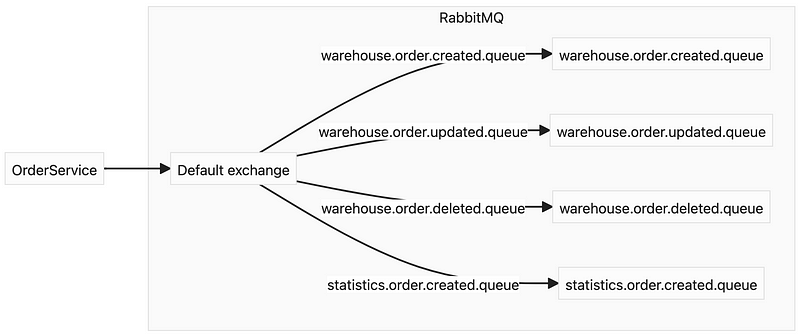Understanding RabbitMQ Topology: A Comprehensive Guide
Written on
Chapter 1: Introduction to RabbitMQ Topology
Finding reliable guidance on RabbitMQ exchanges and queue topologies can be surprisingly challenging. Most resources either delve into server tuning or offer vague suggestions, emphasizing that it varies based on application purpose, load, and various other factors. While RabbitMQ is indeed versatile, capable of addressing diverse problems through various exchanges and bindings, there is no universal solution. When I began working with RabbitMQ, I sought fundamental guidance on structuring microservices communication—specifically, how to establish a topology, name exchanges, queues, and routing keys without creating a tangled mess as the application scaled. In this guide, I aim to share insights from my experience and illustrate a straightforward example of organizing microservices communication.
Basics of RabbitMQ
I won’t dive into the foundational concepts like producers, consumers, exchanges, queues, and routing keys, as these are clearly articulated in the official documentation with practical examples. If you are entirely new to RabbitMQ, I recommend familiarizing yourself with these basic concepts first.
Application Context
Let’s consider a simple application designed to simulate a store. Customers can place orders, and the warehouse needs to be notified of any changes to manage inventory effectively. Additionally, we aim to collect statistics on order creation. This scenario involves three services that need to interact: order management, warehouse operations, and statistics tracking.
Using Default Exchange
To set up RabbitMQ topology effectively, the easiest approach is to utilize the default exchange. By binding queues to this exchange, messages will be routed to the appropriate queues based on matching routing keys.

In our example, we can send messages to the default exchange, assigning queue names that reflect CRUD operations. Although this method is straightforward, it has a significant drawback: consumers must be aware of the queues associated with the exchange, creating implicit dependencies. For instance, if we need to inform both the warehouse and statistics services of order creation, we must send events with distinct routing keys for each consumer.
Despite its limitations, the default exchange can still be useful for implementing retry patterns.
Fanout Exchange
Another exchange type we can leverage is the fanout exchange, which disregards routing keys and delivers messages to all queues bound to it. Services can then examine the amqp_type or other custom headers to determine whether to process a message and how to do so.

This exchange type is beneficial when most messages need to be sent to every consumer. However, in our scenario, the statistics service should only receive a specific subset of events. With this topology, it would be compelled to receive and ignore other message types.
Direct Exchange
Utilizing a direct exchange significantly enhances our topology, as it routes messages to queues bound to the exchange with the corresponding routing key. This allows us to assign unique routing keys for each operation, enabling consumers to subscribe solely to messages that interest them.

For example, the queue orders.statistics.queue is associated with the order.created routing key, ensuring it only receives relevant messages. Meanwhile, the orders.warehouse.queue receives messages corresponding to all CRUD operations.
Topic Exchange
Another exchange type worth mentioning is the topic exchange, which operates similarly to the direct exchange but allows for special symbols in routing keys during binding:
- # - matches zero or more words
- * - matches a single word
This flexibility is useful when dealing with an indefinite number of routing keys, as we can employ a regex-like approach to manage all messages matching specific routing keys.

For instance, if we want the warehouse to receive all updates related to the order entity, we can use the routing key order.#. This setup ensures that if new routing keys emerge in the future, there’s no need to alter the queue binding.
References
- Routing Topologies for Performance and Scalability with RabbitMQ
- RabbitMQ Exchange and Queue Design Trade-off
- RABBITMQ: BEST PRACTICES AND ADVANCED USE-CASES
- Best practices to design APIs with AMQP
Chapter 2: Practical Examples of RabbitMQ Topology
This video provides an overview of the VMware RabbitMQ Topology Operator, showcasing how to leverage RabbitMQ for effective microservices communication.
In this tutorial, explore the fundamentals of RabbitMQ, focusing on message queues and their role in distributed systems.